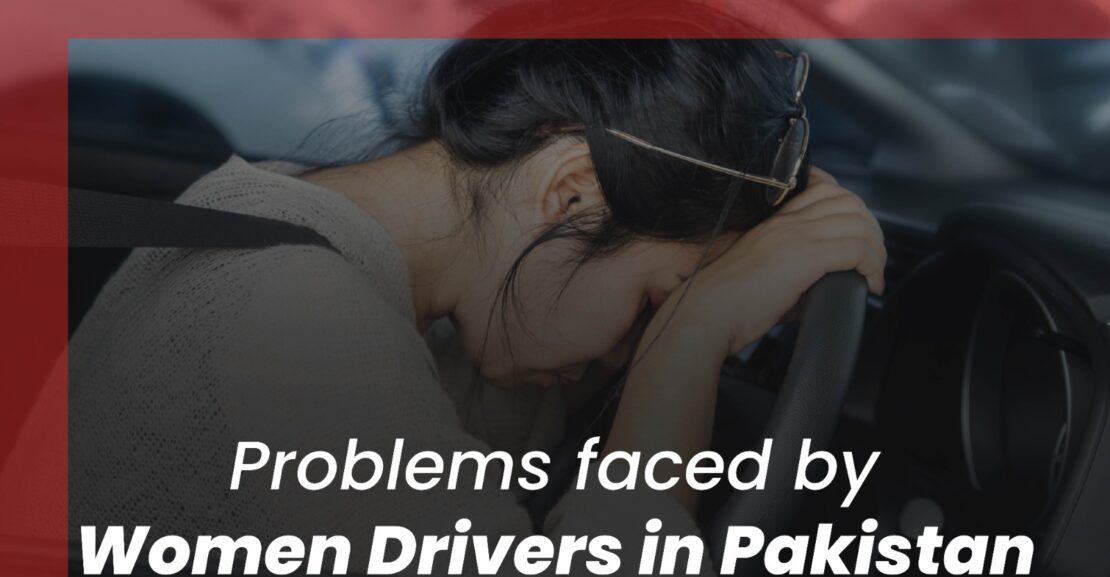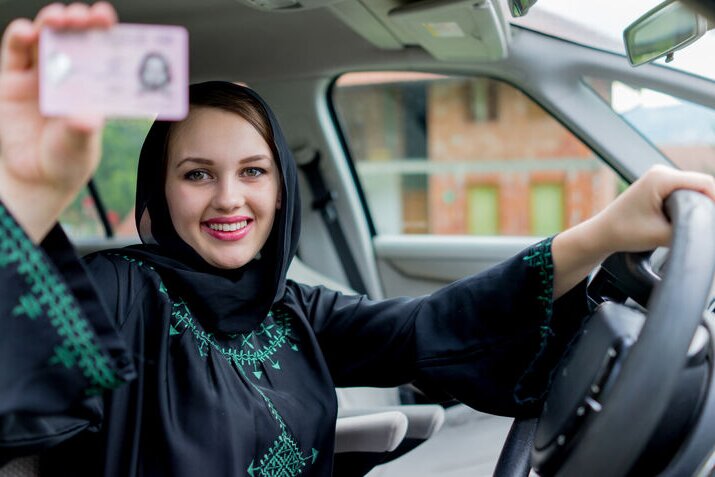Pakistan’s streets tell a story of male dominance, a visible testament to the fact that seeing women behind the wheel is still far from the norm. Our roads are populated mainly by men, and for some, this makes the presence of women drivers seem “out of place.” Sadly, this imbalance breeds a persistent stereotype: the idea that “women are bad drivers.”
But the real question is, are women bad drivers, or is there more to the story? This piece explores the challenges and misconceptions surrounding women drivers in Pakistan, including the everyday hurdles we face while doing the simplest of tasks, like dropping kids at school, running errands, or just navigating the streets for our personal needs.
The Real Challenges Women Drivers Face in Pakistan
The problems women face while driving in Pakistan are deeply embedded in cultural and social norms. They affect their driving experience and confidence behind the wheel. Let’s break down the main challenges they encounter.
1. Gender Bias and Stereotypes
The stereotype that “women are bad drivers” is so pervasive in Pakistani society that it shapes the behavior of others on the road.
Female drivers in Pakistan often face dismissive, impatient, or hostile treatment from male drivers, who believe that women shouldn’t be on the road or can’t handle driving as well as men. This behavior manifests in aggressive overtaking, honking, or men purposefully driving too close to a woman’s vehicle to intimidate her.
This biased treatment creates a ripple effect. When women are treated this way, they become more cautious and nervous on the road, which can sometimes result in slower driving or hesitation. Instead of seeing women as equal participants in traffic, many men take it upon themselves to “show women how it’s done,” reinforcing a toxic and discouraging environment.
2. Road Safety Concerns
Security is a critical issue for women drivers in Pakistan. While harassment on public transport is often discussed, the vulnerability of women in private vehicles is also a major concern. Female drivers generally face harassment in the form of catcalling, being followed by other vehicles, or being intimidated by groups of men, especially when driving alone in the evenings or through less busy areas.
For women, road safety isn’t just about driving carefully—it’s about constantly being alert to potential threats. This extra level of vigilance can make driving mentally exhausting and emotionally taxing. Many women have reported feeling fearful or uneasy on certain roads or at specific times, which restricts their mobility and forces them to plan their routes with caution.
3. Lack of Supportive Infrastructure
Pakistan’s infrastructure is not built with women drivers in mind. Basic facilities such as women-only parking spots, well-lit streets, or safe areas where women can pull over are limited or non-existent. Public parking spaces are often designed with only convenience for men in mind, and this lack of infrastructure creates practical challenges for women.
Moreover, driving schools and training centers are largely dominated by male instructors, which can make women feel uncomfortable or hesitant to enroll. Without adequate and safe opportunities to learn and practice driving in a supportive environment, many women feel intimidated when they do get on the road.
The scarcity of women-specific facilities and training opportunities discourages women from driving and limits their confidence and independence.
4. Cultural and Family Pressure
The pressures women face aren’t only on the road—they start at home and within the community. Many families discourage women from driving because of the perceived “dangers” of being a female driver on the road. These dangers, of course, arise from the biases and societal attitudes we’ve discussed, creating a cycle where women are discouraged from driving because of problems that exist precisely because they are women on the road.
Family and societal expectations place a heavy burden on women drivers to “prove” themselves. Unlike their male counterparts, whose driving mistakes are often shrugged off, women are under immense pressure to drive perfectly at all times. This expectation can be overwhelming, and the weight of having to represent an entire gender behind the wheel creates anxiety and stress, making driving a far more challenging experience than it needs to be.

Are Women Really Bad Drivers?
The quick answer? No, women are not inherently bad drivers. Research shows that women tend to be more cautious, which can contribute to safer driving habits.
However, in a society where every small misstep is amplified, women drivers are held to an unrealistic standard of perfection. If a woman makes even one minor mistake, she is labeled for life, while male drivers rarely face such harsh judgments.
The truth is society’s biases create an environment where women are constantly under scrutiny, making it easy to misunderstand their abilities. If anything, the stigma surrounding women drivers has more to do with societal expectations than with driving skills themselves.
Many women are excellent drivers, but the stress of performing “flawlessly” in a critical environment can lead to occasional mistakes—a human experience everyone, regardless of gender, shares.
Empowering Women Drivers in Pakistan: A Call for Change
Shifting societal attitudes and supporting women’s rights to navigate public spaces freely and confidently is essential to creating a more inclusive driving culture in Pakistan.
Here are some steps that can help empower women drivers and create a fairer road culture:
1. Open-Mindedness and Patience
Men need to approach female drivers with open-mindedness and patience, rather than with judgment or impatience. A more respectful attitude from men on the road can significantly reduce the tension and intimidation that women experience.
When male drivers see women on the road, they should view them as equals, not as “challenges” or “obstacles” to be overtaken.
2. Building Confidence and Trust
Creating a supportive environment is essential for building confidence among women drivers. Society must express trust in women’s driving abilities rather than subjecting them to undue scrutiny.
Trust and positive reinforcement from family members and friends can make a huge difference in encouraging more women to drive confidently and independently.
3. Improving Road Infrastructure for Women’s Safety
The government and municipal bodies must recognize the need for women-specific infrastructure. Women-only parking spots, enhanced street lighting, and secure parking areas are basic requirements that would go a long way in helping women feel safer on the road.
Driving schools should also consider creating more women-friendly spaces, including hiring female instructors, to provide a safe and comfortable environment for women to learn.
4. Encouraging Mutual Respect on the Roads
A fair and respectful driving culture would make a tremendous difference. By acknowledging that everyone has the right to be on the road, society can move towards eliminating the hostile and judgmental attitudes that women drivers often face.
Respect on the road should be given to everyone, and any notion of women being “outsiders” or “unwelcome” should be actively discouraged.
Conclusion: A Plea to Break the Barriers
In a society so fixated on defining women’s roles, it’s ironic how a simple act like driving can become a battleground. But perhaps the real “bad driving” here is the cultural rigidity that makes it difficult for women to drive freely and confidently. If only we saw cars for female drivers in Pakistan as a simple means of mobility, rather than categorizing cars based on gender! After all, across the world, women drive everything from compact cars to trucks, without labels or stereotypes.
As we look to the future, let’s break down these barriers, one road at a time. It’s high time Pakistan’s male-dominated streets make room for all drivers, men, and women alike.
Disclaimer
The viewpoints expressed in this blog are those of the writer only and do not necessarily reflect the opinions or policies of Wheels Buster. If you feel any ambiguity then feel free to reach out to us at: support@wheelsbuster.com


